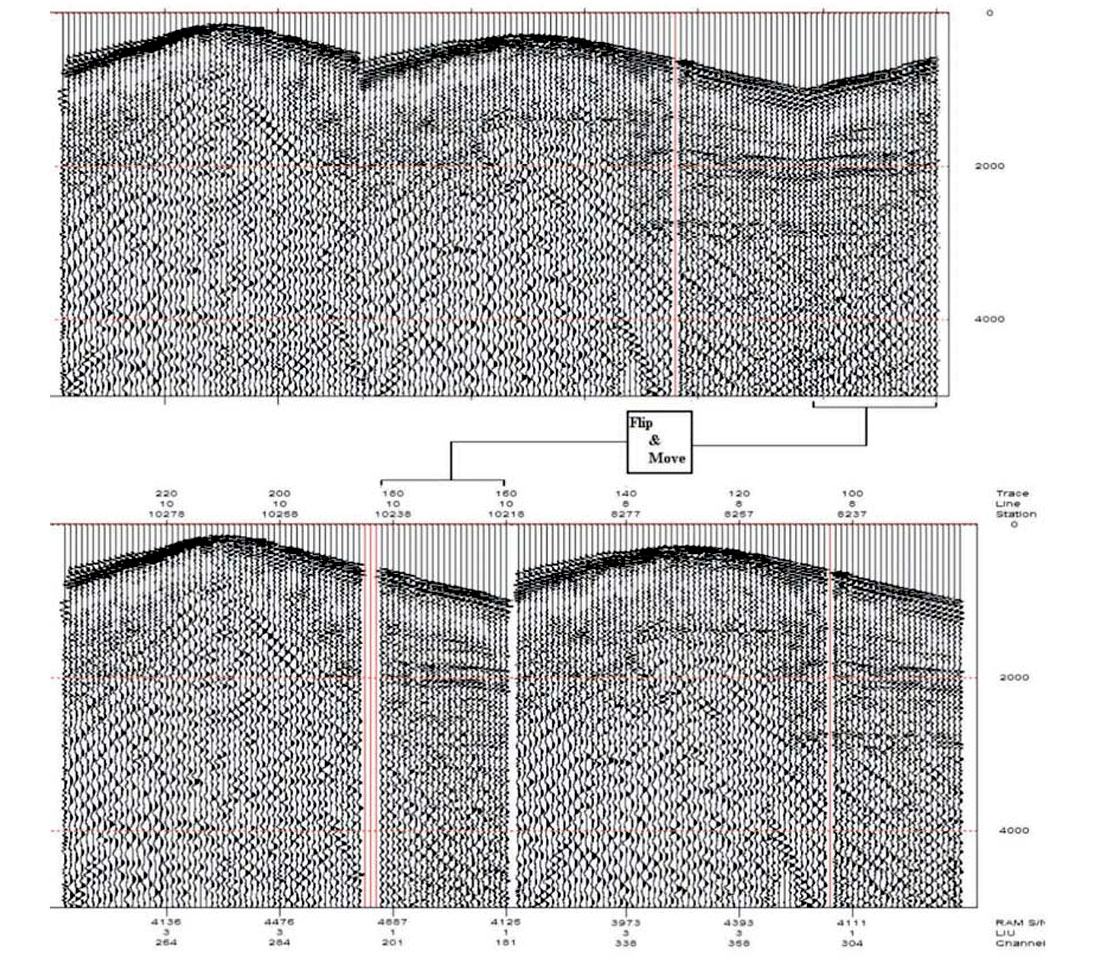Perhaps from the first time that a geophone was planted in the ground and the raw seismic data was handed from a recording engineer to a "field computer" we have heard the refrain, "Oh, they'll fix it in the processing!"
In the early 1990s the seismic recording industry leapt forward with the introduction of 24-bit Delta-Sigma recording systems. Since then most of the new innovations have been the results of a constant tweaking of this technology. Still the seismic data processor has struggled with accurately matching the recorded seismic traces to their actual physical positioning relative to all of the other data traces, in other words "Geometry." This is sometimes referred to as front-end processing. In fact the geometry is so important that at least one major oil company has produced a format for the organization of field recording information which contains as many descriptions of the seismic traces' positions and relationships as there are traces in the seismic acquisition1.
With the ARAM24 recording systems it was felt that the most productive way to "fix" mistakes is to reduce the chances for mistakes to happen in the first place.
When Geo-X Systems Ltd. introduced the ARAM24 seismic recording system in 1993, they already had over 10 years of "doing it in the field" experience, and over 20 years of "fixing it in processing". They felt there had to be a better way to simplify the information the observer had to deal with in order to eliminate the errors which result from the uncertainty and confusion which can result when dealing with 1000+ channels of seismic recording equipment spread over many kilometers. Having an in-depth knowledge of seismic processing, the answer was clear. Use the logical geometry descriptions to control the recording of seismic data in the field. In other words, make things plain, simple, and logical. If the observer can describe the physical location of any receiver relative to his central recording unit then the ARAM24 CRU should manipulate the order of the data to match the geometry.
The geometry for a 3-D seismic recording program typically flows in the following manner:
- A 3-D seismic program is designed to meet certain geophysical objectives and to stay with in certain economical and/or recording equipment constraints. The end result of this design is a "Geometry" which describes the desired location of every source and receiver and the desired "active recording stations" associated with any individual source.
- The Design-Geometry is converted into a format to match the chosen recording system sometimes referred to as a script.
- The recording system operator must then tie his recording system "channels" to the actual location of equipment on the ground and the data is recorded according to the script.
- The seismic data trace headers are written according to the script with the seismic data files being assembled in a linear first in first out approach.
- All of the seismic data, survey data, and system recording information is passed on to the seismic processing company and the geometry is re-created. The seismic processor then matches the data to the geometry to verify that no mistakes were made.
This approach worked well enough in areas where the receiver lines could be layed out in a logical "linear" fashion. But in the real world receiver lines are shortened, or snaked, or "channels" are dropped to get around obstacles. When the seismic traces arrive at the recording truck in this non-linear order and are then output with the first in first out approach the data files produced can become so disjointed as to be unverifiable "on-the-fly" in the field. Hence the reason that even to day we still hear the comment "they'll fix it in processing".

By sorting the data traces according to the geometry "on-the-fly" ARAM24 eliminated the potential for errors due to confusion caused by a non-linear arrangement of the traces within the shot record. This sorting of data according to the geometry has allowed ARAM24 crews to use the flexibility of network telemetry in some of the most complex 3-D layouts and still quickly and efficiently verify that the ground layout is correct.
This concept of using the "Geometry" to control the seismic recording is the cornerstone upon which the ARAM24 was built and upon which new developments are achieved.
The integrated use of geometry within the ARAM24 has also allowed for the development of the following features:
- Predicted first breaks on field monitors - Geometry checking
- Multi-Path Telemetry - alternate cable routes back to the CRU in case of cable breaks
- Automated Multi-component separation - 3C, 4C data separation on the fly
- Velocity controlled deconvolution testing - automated QC
- 3-D Fold analysis and design checking - adapting the design to the field
- Geophysical Data Characterization - predictive stacking abilities
The flexibility of a geometry based system design has allowed Geo-X Systems Ltd. to continue to develop new and innovative tools which assist the seismic crew and the geophysicist to acquire high quality cost effect seismic data. At the same time Geo-X Systems Ltd. has pursued a policy of backward compatibility with its field electronics. This helps to preserve the value of the contractor's field equipment.

Acknowledgements
1 Shell Oil: Shell Processing Support Format For Land 3D Surveys










Join the Conversation
Interested in starting, or contributing to a conversation about an article or issue of the RECORDER? Join our CSEG LinkedIn Group.
Share This Article